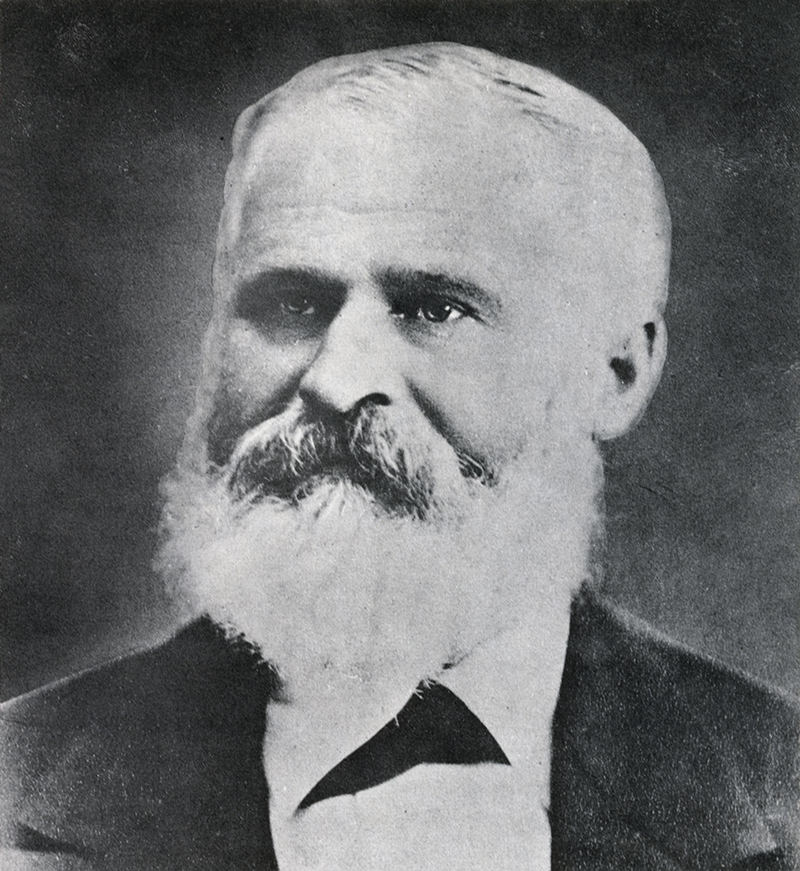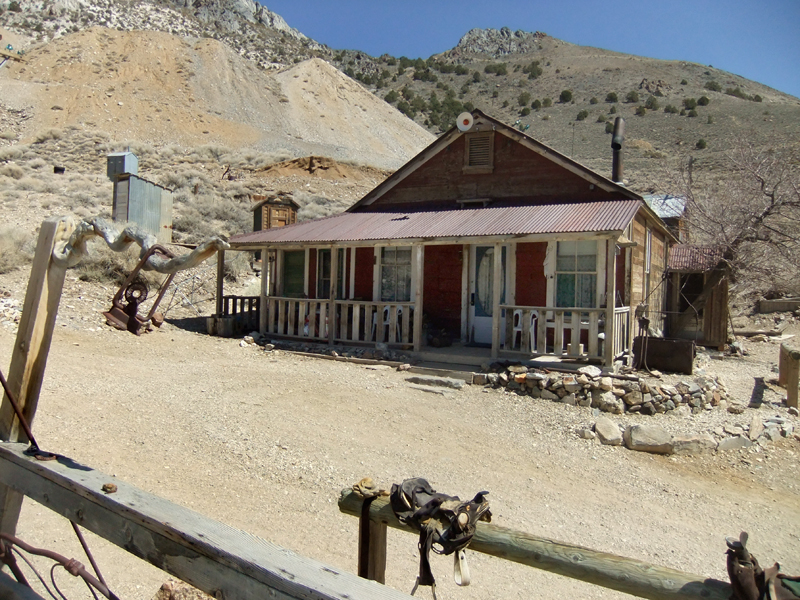|

Click to enlarge.
|
[ORIGINAL FRENCH VERSION]
Rémi Nadeau was born in 1821 in Kamouraska, Quebec, Canada. He emigrated to New Hampshire, where he married Martha Flanders-Frye in 1844; then to Chicago and Minnesota where he was a miller. In 1861 he crossed the plains and stopped in Salt Lake City where he built one or two mills. Then he moved to Los Angeles.
He borrowed a few hundred dollars from Los Angeles real estate agent Prudent Beaudry (future L.A. mayor, 1874-1876) to buy mules and wagons to create a freighting company. His first major runs were the 700-mile trek to Salt Lake City, which took 35 days in both directions. This road began to decline in 1868 when the transcontinental railroad came in.
He then undertook to transport silver ingots to the mines of the Mojave Desert, particularly the Cerro Gordo Mines near Keeler, on the east shore of Owens Lake, several hundred kilometers northeast of Los Angeles. He invented the idea of using teams of 20 mules to transport heavy ingots.
These teams made him the first freighter in Southern California between 1869 and 1882, accounting for a quarter of Los Angeles' exports. The Cerro Gordo [silver] trade was the heart of the Los Angeles economy in the 1870s.
The "teamsters" driving an average of 14 mules stopped at a dozen different watering points including the original Lang Station in Soledad Canyon beginning in 1873. They had to be on the lookout for highwaymen such as Tiburcio Vasquez and his lieutenant, Cleovaro Chavez, who were demanding what could be politely called tolls.
Dozens of mule teams traveled the road in both directions — to Los Angeles with ore; back to Cerro Gordo with fodder, liquor and sundries. The "teamsters" sometimes managed to warn each other of gangsters' activity when they crossed each other. This valuable trade was highly competitive.
In December 1868, mining engineer Mortimer Belshaw and Victor Beaudry (Prudent's brother) hired Remi Nadeau to transport the ore to Los Angeles. Thirty-two teams took $50,000 worth of silver and lead each day — only half of the maximum production — down the Yellow Grade Road to begin a three-week trek to Los Angeles, where the silver and lead were separated in a proper refinery.

Mid-20th-century remnants of Coyote Holes, where Vasquez and Chavez robbed Belshaw and other stage passengers in 1874. Click to enlarge.
|
In 1870, Victor Beaudry began channeling 1,300 gallons of water a day from the sources of Inyo Mountain (then a Mexican source) to the camp's storage tanks.
In the meantime, Rémi Nadeau's freight company turned to the transportation of borax, used in laundry detergents, in the mining camps of Columbus, Nevada. In June 1873, the new Chamber of Commerce and the owners of silver mines asked Rémi Nadeau to return to Cerro Gordo. He agreed on the condition that the owners of the mine invest $150,000 to build new stations along the mountain and desert road. They accepted and built stations at Coyote Holes, Red Rock Canyon, Forks-of-the-Road, Cow Holes and Barrel Springs. He became full partner of the new Cerro Gordo Freighting Company at John Lang's spread in Soledad Canyon.
At the time, the population of Cerro Gordo was 4,500 — a mix of Anglo-Indian, Indian, Hispanic and Chinese workers, most of whom lived in dormitories and earned a rate of $4.00 a day. The mining camp included general stores, lounges, restaurants, at least two hotels, dance halls, eight other buildings, doctors', lawyers' and analysts' [therapists'] offices, and blacksmiths — but no church, school or prison. Payday was followed by brawls in the living rooms and brothels and often ended in gunfire.

Belshaw house at Cerro Gordo. Click for more images.
|
In the late 1870s, Remi Nadeau opened a freight service at Tombstone and Wickenburg, Arizona, but transportation by mule team was almost finished. The Cerro Gordo Freighting Company was dissolved in 1882.
For his part, Rémi Nadeau invested in sugar beets, wine grapes, barley and land in downtown Los Angeles where, in 1886, he built the sumptuous four-story Nadeau Hotel, which the "pueblo" had never seen before. Today it is Times Mirror Square. The building cost $165,000 at the time.
He was a man of great strength of character, a Republican by conviction. His qualities of mind and heart earned the respect of all who knew him.
He died January 15, 1887, leaving his wife, Martha Flanders Frye Nadeau, and four children: Joseph Frye, of Los Angeles; Georges Albert, of Florence; Minnie J.F. Tilton, of Concord, New Hampshire; and Mary-Rose Bell, of Los Angeles.

Nadeau Hotel. Click image to enlarge
Note: Rémi Nadeau was born September 21, 1821, in Kamouraska, Quebec, Canada. His grandson of the same name owned a property in the current Canyon Country, Los Angeles County. His great-great-grandson of the same name is an author of the history books of Los Angeles and California.
The author is thankful to the following:
|









